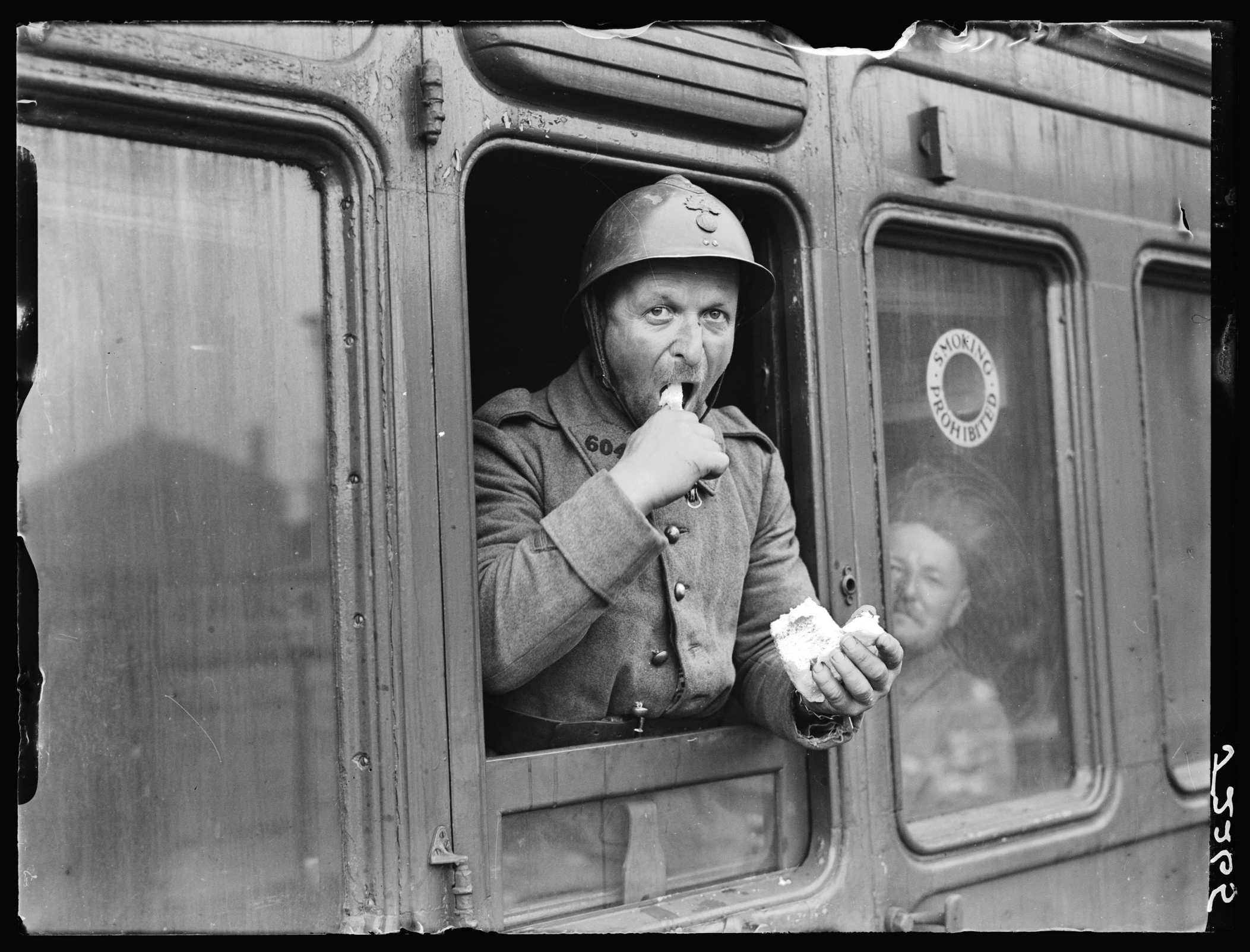Was the Dunkirk evacuation a triumph or a disaster?

This map shows the general location of the three shipping routes used during the Dunkirk Evacuation (1940). Information on shipping routes from Thompson, Julian (2011) [2008]. Dunkirk: Retreat to Victory. New York: Arcade. ISBN 978-1-61145-314-0. Map, page 223.
The Second World War was a war of movement. At the beginning of the war, the German army seemed unstoppable. On 1 September 1939, they invaded Poland using Blitzkrieg (‘lightning war’) tactics such as employing radio to co-ordinate attacks; pounding military and civilian targets with bombers or linking fast moving columns of tanks with troops who parachuted from planes to attack enemy lines from behind. These tactics were highly effective, and when Soviet forces attacked Poland on 17 September, Poland collapsed.
After this rapid victory, Hitler was confident that Britain and France would try to come to terms with him rather than oppose him. He took no action against them, but Britain and France did very little as well. The period from September 1939 to March 1940 became known as the ‘phoney war’. However, Britain did send its forces, the British Expeditionary Force (BEF), to France in case of invasion. In April 1940, Hitler invaded Denmark and Norway, bringing the phoney to an end. British attempts to help Norway failed and Prime Minister Neville Chamberlain was replaced by a new leader, Winston Churchill.
In May 1940, the German army attacked France through Belgium and Holland using their Blitzkrieg tactics. The German advance was so quick that the British Expeditionary Force (BEF), as well as parts of the French army, were caught by surprise. They were in danger of being surrounded by the Germans and were forced to withdraw to Dunkirk, on the French coast. The only escape route was by sea. At this point, the BEF was in real danger of being wiped out.
On 27 May, the British government put ‘Operation Dynamo’– a plan to evacuate the troops to Britain by sea - into action. As well as the Royal Navy’s ships, all sorts of craft were used, including pleasure steamers and fishing boats. On the beaches around Dunkirk the Allied troops and equipment were dive bombed by German planes and pounded by German artillery. Then Hitler unexpectedly ordered the advancing German forces to halt. Historians debate why this may have happened – Hitler may have lost his nerve (German losses were severe) or he may have hoped to negotiate a deal with the British. Whatever the reason, it gave the BEF sufficient time to evacuate most of its army. Between 26 May and 4 June, 338,000 British and French troops were evacuated, although as you will see in this investigation there were different numbers reported at the time.
Dunkirk was celebrated in Britain as a great achievement and became known as the ‘miracle of Dunkirk’. Before Operation Dynamo had begun, Churchill was pessimistic about its outcome and had warned the House of Commons to expect ‘hard and heavy tidings’. However, after its seeming success, the organisation of the Royal Navy was praised and the bravery of the RAF who fought the Luftwaffe over Dunkirk was emphasised. Much was made of the ‘little ships’ which had rescued around 80,000 troops. Yet the BEF had been driven out of Europe after only ten days of fighting, 3,500 British soldiers had been killed during the French campaign and around 40,000 Allied troops (mainly French) had been left behind to fight the Germans alone. In addition, the British forces had left most of their equipment behind. Field guns, anti-aircraft guns, tanks and motor vehicles, had been either destroyed or left for the Germans. Churchill was aware of these pitfalls and in a speech to the House of Commons on 4 June 1940 he warned that ‘we must be very careful not to assign to this deliverance the attributes of a victory. Wars are not won by evacuations.’ He encouraged France to fight on without the BEF, but France had lost 40% of its army at Dunkirk and 80% of its equipment, and the French government surrendered on 21 June 1940.

UNITED KINGDOM - FEBRUARY 23: French soldier, 1940 A photograph of a French soldier at the window of a train, taken by Roper for the Daily Herald newspaper on 2 June, 1940. This soldier was one of thousands evacuated from France. Between 27 May and 4 June, 1940, in one of the most famous actions of World War Two, some 226,000 British and 110,000 French troops were rescued from German capture via the channel port of Dunkirk. This photograph has been selected from the Daily Herald Archive, a collection of over three million photographs. The archive holds work of international, national and local importance by both staff and agency photographers. (Photo by Daily Herald Archive/SSPL/Getty Images)
➜ Investigation page
➜ The sources
➜ Notes for teachers
Find out more
➜ Jeremy Black on Churchill as a strategist during World War Two *:
➜ Dover Castle’s role in Operation Dynamo, from English Heritage
➜ ‘Memories from Dunkirk’ – a collection of soldiers’ memories from the British Legion
➜ BBC History website on the Second World War
➜ National Archives classroom resources on the Second World War
*This page requires a subscription to the Churchill Archive. Click here to request free access for secondary schools and Sixth Form colleges.
